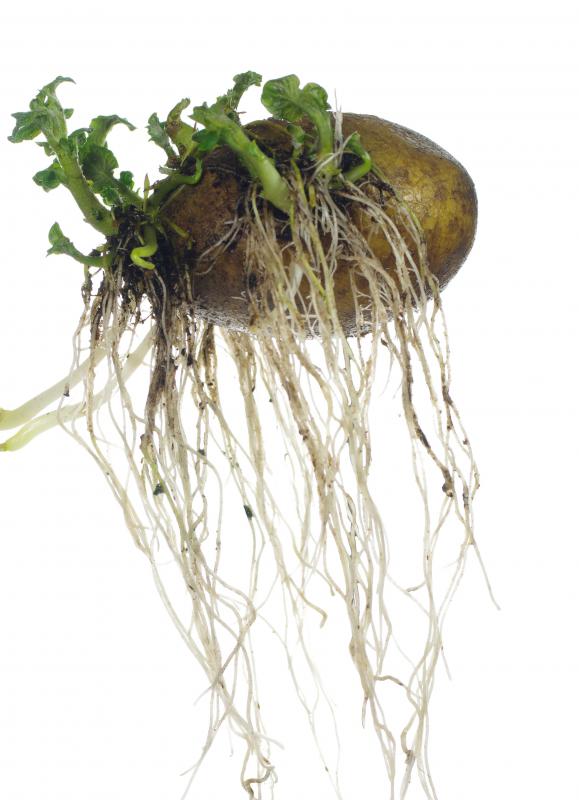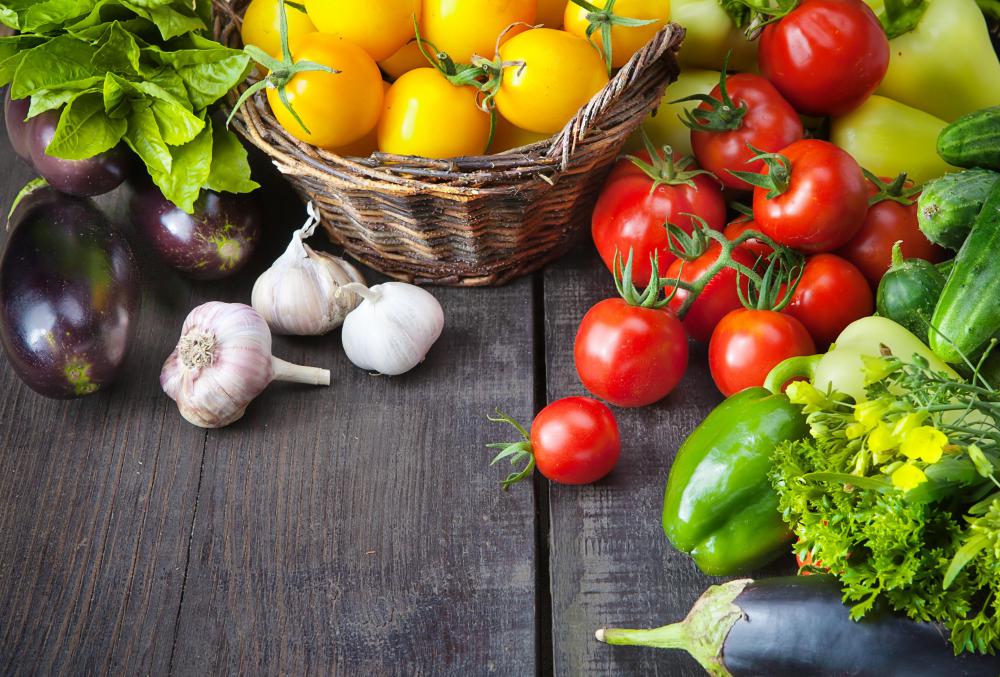At TheHealthBoard, we're committed to delivering accurate, trustworthy information. Our expert-authored content is rigorously fact-checked and sourced from credible authorities. Discover how we uphold the highest standards in providing you with reliable knowledge.
Are Green Potatoes Poisonous?
When people worry about green potatoes being poisonous, they should actually be worried about the toxic effects of all potatoes. Potatoes are, to a certain degree, poisonous, though not in a deadly manner, and usually not enough to make anyone sick. The leaves of potatoes do contain high levels of a certain poison, and are direct relatives of nightshade, a poisonous plant. Green potatoes, the actual spuds, may contain just a little more of this poison than do white ones, and reflect improper storage or growing methods.
The green color is not the issue. This is merely a sign that a potato has been exposed to light, prompting it to produce more chlorophyll, and chlorophyll is not toxic to humans. What creates the problem with green potatoes is that exposure to light also produces a substance called solanine, a glycoalkaloid, which has been shown to be toxic when consumed in great quantities. Scientists have sought to determine exactly what quantity of green potatoes it would take to cause human toxicity, and it turns out that an adult would have to eat about 4.5 pounds of light-exposed potatoes (approximately 2 kg) to reach toxic blood levels of solanine.

There are some theories about whether regular consumption of potatoes that have gone green might reduce levels needed to produce poisoning. It is thought that it takes the body over a full day to clear solanine from the body, and so eating potatoes that are green on a daily basis could have some cumulative affect or accumulate toxic levels more quickly. Still, in the US, it has been over 50 years since any one has succumbed to potato poisoning, and it’s generally thought that people are at low risk for solanine toxicity from potato consumption.

This may leave cooks wondering whether they ought to eat green potatoes or discard them. For greatest safety, it is probably best to discard potatoes that are green, to avoid consuming solanine. Though a bite of these potatoes is unlikely to be fatal, consuming poisons on purpose isn’t a great plan for healthy living.
Scientists have tried to assess exactly how much poison results from green potatoes, and here people may be in for a surprise. Some potatoes will retain their white color but have been exposed to light, and still have higher than normal solanine levels, and some greener potatoes have lower levels of this toxin. Color isn’t necessarily the best indicator of potato toxicity. One study in 2006 published in the Journal of Agriculture and Food Chemistry found that improperly stored potatoes accumulate most solanine in the peel. This might suggest that peeling the potatoes is the best way to get rid of this toxin, no matter the color of the potato underneath.
AS FEATURED ON:
AS FEATURED ON:













Discussion Comments
Poison: Solanine. This is how the plant protects itself from being eaten above ground. The poison is colorless but develops in the same conditions as chlorophyll, which is green, hence the use of the color to indicate poison.
Eyes: these are the places where green sprouts would appear if the potato was allowed to become a new plant.
Skin: this is the plant's protection from the outside world -- it only goes green if left in the light. Keep your potatoes cool, dry, and in the dark, and don't be afraid of a light dusting of soil on them.
If some light starts to make some of the skin go green, the process of solanine production will have begun in that area. Don't eat any shoots, flowers or fruits of the potato plant, as these are far more poisonous than a greenish tuber.
So remove the eyes when peeling any greenish potatoes, and any green skin or flesh must be thrown out and not fed to the chickens! However as anyone who has dug them out of the ground knows, a fresh potato is not at all green. The skin is extremely good for you, so if it is healthy don't waste it!
Well, I have just fainted twice the morning after consuming green potatoes. I added only one such potato from which I removed most of the green, and today I woke up unwell and after standing up fainted two times. I'm staying home from work and trying to figure out connections. Not sure it was the little bit of green potato I ate -- just sharing. Scary.
Great information thanks.
I find green potatoes do not fall to make a quality mash- they stay harder as if not thoroughly cooked. Anyone else observed this? -telduf
Just so everyone knows I went to the hospital last night from eating a slightly green baked potato. Ive eaten baked potatoes all my life (have an obsession actually) so I am not allergic by all means. But, this potato definitely affected me.
My symptoms were I almost fainted, loss of breath, my throat somewhat swelled, and I was very dizzy. It is now day two and I am extremely week can barely walk up the stairs because I get dizzy. I am a 21 year old female.
The last thing I ate before this was a bagel and cream cheese. I read that if you do get poisoned from a potato it will happen instantly and it happened within 5-10 minutes. Very scary.
I've heard that the berries that grow on the potato plant are poisonous. Is there any truth to this? Just curious. I don't plan on consuming any potato berries any time soon.
We have always used them and peeled the green away. We could not afford to throw them away and all of us are still alive and well. Peel it away and eat them! MAB
I thought it was the potato "eye" that was the poisonous part. No mention of it here though.
Why would they go through the effort to study that most solanine is accumulated in the peel, but then not study a bit further to determine if peeling the skin gets rid of (or at least lowers) the risk of poison?! Seems like a wasted opportunity to give an actual solution to this worry.
Post your comments